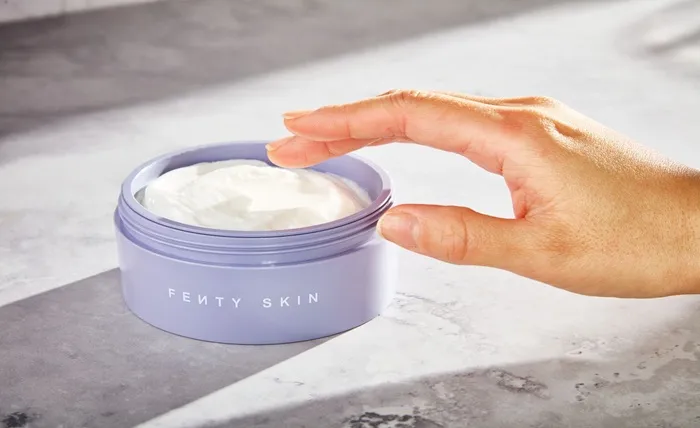Staying hydrated is one of the easiest ways to keep your skin looking healthy, soft, and glowing. But hydration isn’t just about drinking enough water—it’s also about choosing lotions and creams that support your skin’s natural barrier and help it hold onto moisture. With so many products available, selecting the right one can feel overwhelming. The good news is that a little knowledge about ingredients, skin types, and formulas can make the process much easier. This article explores how hydration affects skin health and how to pick the perfect lotions and creams for your daily routine.
Why Hydration Matters for Your Skin
Your skin is your body’s largest organ, and just like any other organ, it needs proper hydration to function well. When your skin is well-hydrated, it appears smoother, more elastic, and naturally radiant. Hydration helps strengthen the skin barrier, which protects you from pollutants, irritants, and harsh weather conditions.
On the other hand, dehydration can lead to tightness, flakiness, irritation, and premature fine lines. Many people mistake dry skin for dehydrated skin, but they’re not the same. Dry skin lacks oil, while dehydrated skin lacks water. Both conditions can benefit from hydrating skin care products, but they require slightly different solutions. Understanding your skin’s needs is the first step toward building a routine that truly works.
Know Your Skin Type Before Choosing Products
Before picking a lotion or cream, it’s important to identify your skin type. This helps you avoid ingredients that may cause irritation and choose formulas that bring out the best in your complexion.
Dry Skin
Dry skin lacks natural oils, so it often feels rough, flaky, or itchy. If this sounds familiar, opt for rich creams with heavier textures. Ingredients like shea butter, ceramides, and squalane help lock in moisture and repair the skin barrier. These products provide long-lasting hydration and prevent moisture loss throughout the day.
Oily or Combination Skin
Oily or combination skin still needs hydration, even if it doesn’t always feel dry. Lightweight lotions and gel-based moisturisers work best because they hydrate without clogging pores. Look for non-comedogenic products containing hyaluronic acid or glycerin, which provide water-based moisture that feels light on the skin.
Sensitive Skin
If your skin is easily irritated, choose formulas with minimal ingredients. Fragrance-free creams with soothing components like aloe vera, colloidal oatmeal, or chamomile can help keep redness and irritation under control.
Normal Skin
If you’re lucky enough to have normal skin, almost any lotion or cream will suit you. However, sticking to gentle, nourishing ingredients ensures your skin stays balanced and healthy.
Understanding Lotion vs. Cream: What’s the Difference?
Lotions and creams both moisturise, but they differ in texture, oil content, and the type of hydration they offer.
Lotions
Lotions contain more water and less oil, making them lighter and easier to spread. They’re ideal for warmer climates, daytime use, or people who dislike heavy products. Lotions are great for oily or combination skin and absorb quickly without leaving a greasy feel.
Creams
Creams contain a higher concentration of oils, giving them a thicker texture. They create a protective layer on the skin to prevent moisture loss, making them perfect for dry, mature, or sensitive skin. Creams are often recommended for evening routines or colder months, when skin needs extra nourishment.
Choosing between a lotion and a cream often comes down to your skin type and personal preference. Some people even switch between the two depending on the season.
Ingredients That Truly Hydrate
Not all moisturising ingredients are created equal. Understanding what to look for can make your shopping experience much easier.
Humectants
Humectants draw water into the skin. They’re great for every skin type and form the foundation of effective hydration. Popular humectants include:
- Hyaluronic acid
- Glycerin
- Aloe vera
These ingredients help plump the skin and keep it feeling fresh and hydrated.
Emollients
Emollients soften and smooth the skin’s surface. They help fill in tiny cracks, making skin feel softer and more flexible. Look for:
- Squalane
- Fatty acids
- Plant oils (like jojoba or almond oil)
Occlusives
Occlusives create a protective barrier that locks moisture in. They’re best for dry or compromised skin. Common occlusives include:
- Shea butter
- Beeswax
- Petrolatum
Using products that combine all three categories can give your skin balanced hydration that lasts.
Seasonal Care: Adjust Your Routine Throughout the Year
Your skin’s hydration needs change with the seasons. Lightweight lotions work well in spring and summer, when humidity is higher and you naturally produce more oil. During autumn and winter, the colder air pulls moisture from the skin, making thicker creams and balms essential.
If you travel frequently, your skin may also react to different climates. For example, flying can dehydrate your skin quickly, so applying a nourishing cream before a flight—or using a hydrating mist mid-air—can make a noticeable difference.
How to Apply Lotions and Creams for Best Results
Applying your moisturiser correctly helps maximise hydration.
- Use it on damp skin: Applying lotion or cream right after a shower helps lock in water molecules.
- Don’t use too much: A small amount often goes a long way, especially with richer creams.
- Be consistent: Regular application keeps your skin healthy over time.
- Layer if needed: For very dry skin, you can pair a hydrating serum with a cream for extra nourishment.
Your routine doesn’t need to be complicated—just consistent and tailored to what your skin needs.
Choosing Products That Fit Your Lifestyle
The best lotion or cream is one you’ll actually use daily. If you prefer quick, lightweight products, lotions may be more appealing. If you enjoy a calming nighttime routine with rich textures, creams may suit you better. Many people also look for body care products that complement their moisturiser, creating a simple routine that supports hydration from head to toe. Consider whether you want clean beauty options, fragrance-free formulas, or products with natural ingredients. The goal is to support your skin in a way that feels enjoyable and sustainable.
Conclusion
Hydrated skin is healthy skin, and choosing the right lotions and creams can make a big difference in how your skin looks and feels. By understanding your skin type, paying attention to ingredients, and adjusting your routine based on the season or your environment, you can maintain soft, glowing, and balanced skin all year long. With the right products and a consistent routine, healthy hydration becomes easy—and your skin will thank you for it.







